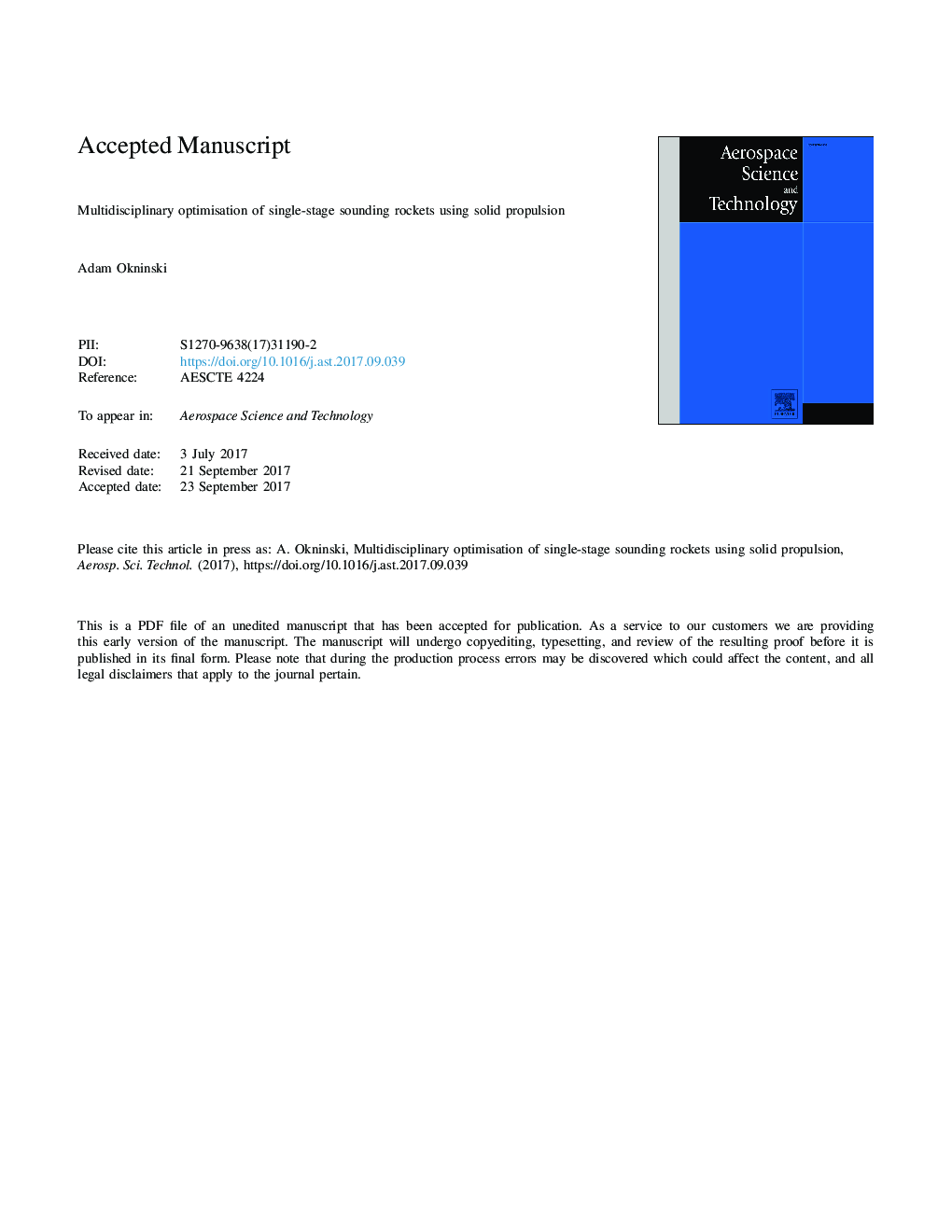| Article ID | Journal | Published Year | Pages | File Type |
|---|---|---|---|---|
| 5472678 | Aerospace Science and Technology | 2017 | 14 Pages |
Abstract
Existing sounding rockets are based on earlier proven designs and often utilize surplus military solid rocket motors. Therefore commonly non-optimal, in terms of performance for a given payload, configurations are utilized. This paper presents a methodology for finding close-to-optimal, in terms of launch mass minimization, design configurations for small unguided sounding rockets. A numerical, multidisciplinary approach is used. During the optimization process vehicle sizing and corresponding aerodynamics modelling is done. The implemented flight simulation module is simplified due to unknown, during the conceptual design phase, rocket mass distributions along vehicle major axes. Special attention is given to propulsion system sizing and thrust level selection. This paper presents optimization of sounding rockets with lift capabilities equivalent to sending small payloads above the Von Karman line. The ultimate aim of this paper is to present methods to improve sounding rocket performance at an early stage of design, to enable conducting more efficient microgravity research. Various concepts, such as using different expansion ratio nozzles for different payload envelopes and masses, are discussed. Optimization results for maximizing the apogee of a small sounding rocket are presented. Due to the lack of published corresponding research, guidelines for future sounding rocket developments, based on numerical investigations, are given. The significance of the study is due to the emergence of new sounding rocket designs, without use of surplus motors, and the possibility to improve vehicle efficiency after a few decades of little alteration.
Keywords
Related Topics
Physical Sciences and Engineering
Engineering
Aerospace Engineering
Authors
Adam Okninski,
